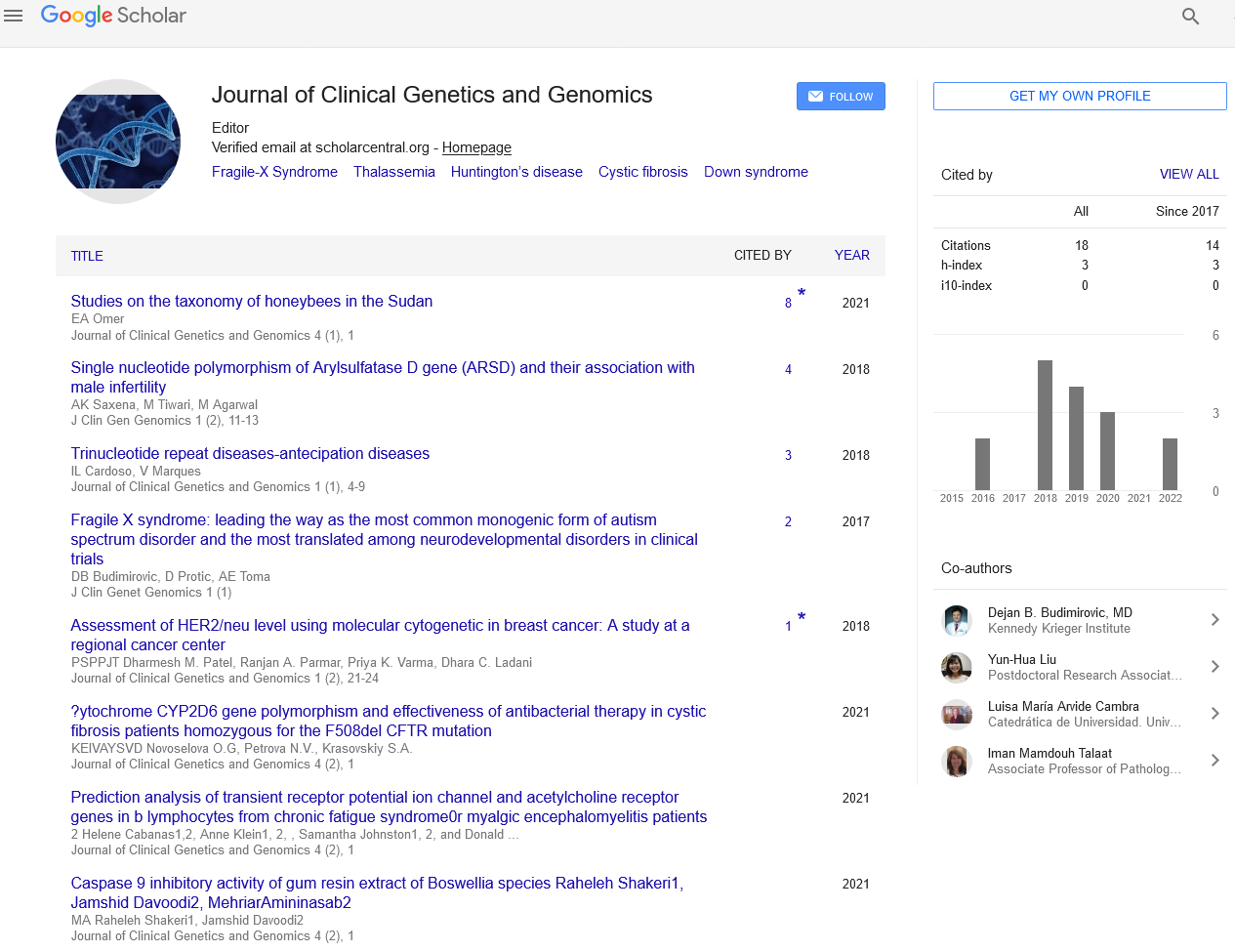Overview on mitochondrial disease and malfunction
Received: 01-Oct-2021 Accepted Date: Oct 15, 2021; Published: 22-Oct-2021
Citation: Guptha S. Overview on mitochondrial disease and malfunction. J Clin Gen Genomics. 2021;4(3):2.
This open-access article is distributed under the terms of the Creative Commons Attribution Non-Commercial License (CC BY-NC) (http://creativecommons.org/licenses/by-nc/4.0/), which permits reuse, distribution and reproduction of the article, provided that the original work is properly cited and the reuse is restricted to noncommercial purposes. For commercial reuse, contact reprints@pulsus.com
Abstract
Mitochondrial disease is a term used to describe a range of illnesses caused by mitochondrial malfunction. Mitochondria are energygenerating organelles present in all cells of the human body except red blood cells. They transform food molecules' energy into ATP, which drives most cell processes. Mitochondrial diseases (MD) are a wide set of mitochondrial dysfunction-related maternally inherited, autosomal dominant, or recessive genetic abnormalities. MD can strike at any age, and many of them appear with a multisystem presentation and a wide range of symptoms. Because mitochondria play such an essential part in neural homeostasis, neurological symptoms such as movement disorders are common.
Description
Mitochondrial disease is a term used to describe a range of illnesses caused by mitochondrial malfunction. Mitochondria are energygenerating organelles present in all cells of the human body except red blood cells. They transform food molecules' energy into ATP, which drives most cell processes. Mitochondrial diseases (MD) are a wide set of mitochondrial dysfunction-related maternally inherited, autosomal dominant, or recessive genetic abnormalities. MD can strike at any age, and many of them appear with a multisystem presentation and a wide range of symptoms. Because mitochondria play such an essential part in neural homeostasis, neurological symptoms such as movement disorders are common. Recent research shows that the dopaminergic nigrostriatal system is particularly susceptible to mitochondrial malfunction, and that mtDNA maintenance abnormalities are commonly linked to nigrostriatal degeneration, which might explain the pathophysiological process. Newer treatment methods that target multiple pathways of mitochondrial failure have been investigated, but clinical studies are still needed to enhance MD patient care.
Mitochondrial illnesses are distinct from other diseases in that they are frequently hereditary and mitochondria are so important to cell function. Mitochondrial myopathies are a subgroup of these illnesses with neuromuscular symptoms. Mitochondrial diseases (MD) are the most prevalent mitochondrial dysfunction-related metabolic illnesses. Mutations in genes encoded by mtDNA or nDNA affect the structure and function of mitochondria in MD; as a result, MD genetics is complicated and evolving. MD is classified genetically into two groups: (1) MD produced by mutations in multiple mitochondrial nDNA genes. (2)MD caused by primary mtDNA mutations, and MD can develop at any age and has a wide clinical spectrum, however certain clinical syndromes have a characteristic infantile beginning, while others arise later in life and typically have a milder course. MD is a diagnosis that is made when a person is diagnosed with the disease. Because of the heterogeneity of the clinical presentation and the existence of symptoms that overlap with other neuromuscular or neurodegenerative diseases, it can be difficult to diagnose. Recurrent clinical symptoms in traditional syndromes linked with particular mtDNA mutations, on the other hand, strongly indicate the diagnosis. Recent research has shown that the nigrostriatal system is particularly vulnerable to mitochondrial dysfunction, and that conditions characterised by a lack of mtDNA maintenance and, as a result, an accumulation of somatic mtDNA damage, are frequently associated with nigrostriatal degeneration, whether or not clinical signs of parkinsonism are present.
Movement problems are a component of the MD clinical spectrum in both juvenile and adult patients, and generally occur in conjunction with a mitochondrial multisystem presentation. Dystonia and ataxia are the most prevalent MoDs in children, and they are more commonly linked to mtDNA mutations. Adults with myoclonus, ataxia, and Parkinsonism have been described in mtDNA mutation syndromes or nDNA mutations that cause mtDNA maintenance to be disrupted. The treatment of these diseases is mostly empirical, thus large cohort studies are needed to enhance the management of MD patients with MoD.





